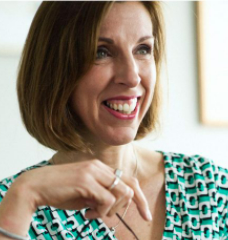Skin changes during menopause Factsheet
Written by Consultant Dermatologist, Dr Sajjad Rajpar
Skin changes are very common during the perimenopause and menopause. One survey showed that 46% of women attending a menopause clinic had skin issues arising from the menopause.
This factsheet takes you through the most common skin concerns around the time of the menopause and suggests what you can do to alleviate the problem.
Itching and dry skin
The most common complaint among women around the time of the menopause is itching and dry skin. Estrogen is required for the skin’s natural hydration mechanisms, as it helps the skin produce ceramides, natural hyaluronic acid and sebum. Without these substances, water evaporates very easily causing the skin to become dry and scaly.
What you can do
Soap can be very drying, and it is best to avoid products that lather, foam or bubble, as these will simply strip away grease from the skin. Use a gentle nonfoaming cleanser on your body instead of soap. If your skin is still dry, use a moisturising lotion as a soap substitute.
Try to get into the habit of moisturising your skin twice a day and immediately after a shower or bath. Moisturisers help the skin hold onto more water and prevent it from drying out. Use a lighter moisturiser in the daytime and something heavier at night.
There are other causes of itching, aside from dry skin. Sometimes itching can be related to release of histamine in the skin; irritation of skin nerves can give the sensation of insects creeping on the skin (known as ‘formication’). Other causes of itching are iron deficiency and thyroid disturbance. It is worth reviewing these possible causes with your doctor.
Redness and flushing
Flushing is a well recognised symptom of the menopause. Flushing can also occur from rosacea, a condition in which the blood vessels in the skin become very reactive. Rosacea appears to be more common in women, especially during the menopause.
What you can do
Redness and flushing from rosacea can improve with simple lifestyle changes, such as cutting down on your intake of alcohol and caffeine, avoiding spicy foods, and protecting your skin from the sun. Sometimes additional measures may be required, such as creams or laser treatments that help shrink tiny blood vessels in the skin.
Spots and other types of acne
Spots are very distressing at any stage in life, but particularly when they occur around the menopause. Many ladies especially those who have a history of acne as a teenager – have flare ups around the menopause and it is not clear why. It is possible that a drop in estrogen means the ratio of male hormones is relatively higher, and this may trigger acne. For some, acne continues to be a problem, even following estrogen replacement.
What you can do
Take a good look through your make up and sun protection products and check that they are all noncomedogenic (this means they are not going to aggravate acne). Use a mild cleanser that contains salicylic acid, as this will help exfoliate the skin and unblock pores. Retinol and niacinamide are useful ingredients to include in a skin care regime if you are prone to outbreaks. Remember, it can take a couple of months for skin products to work for acne, so be patient.
Facial hair growth
A change in the ratio of estrogen to testosterone can promote thick hairs to develop on the upper lip, chin, cheeks and jaw line.
What you can do
Hair removal methods include plucking, waxing, threading, shaving and depilatory creams. Electrolysis and laser hair removal can offer a more permanent solution to unwanted hair. A prescription cream is also available to help slow down the rate of hair growth.
Signs of sun damage
Signs of sun damage may become more prominent around the menopause, especially for those who have spent a considerable amount of time in the sun over their lifetime. Many sundamage sufferers experience irregular skin tone, lack lustre skin and sun spots. Sun spots are flat brown marks that show up on the face, décolleté and arms. Thread veins, lines or wrinkles may develop.
What you can do
Avoid tanning and any skin burning by wearing a high factor SPF (e.g. Factor 50) and reapplying the SPF every 2 hours that you are in the sun. Also wear a hat with a wide brim and long sleeves, where possible. If you are worried about any dark sun spots or changing moles, see your doctor for a review of your skin.
Bruising, fragile skin and slow wound healing
Your skin becomes more fragile as you get older and a lack of estrogen can exacerbate this process. This is because estrogen is necessary for collagen production and if collagen production drops, the skin will weaken. Bruising is also caused by a reduction in collagen around the tiny blood vessels in the skin. With a lack of collagen, even the slightest knock can produce a bruise. Wounds also take longer to heal for those whose levels of estrogen are low.
What you can do
Consider replacing your lost estrogen by taking HRT, sooner rather than later, as this can help preserve the skin’s collagen levels.
Wrinkles, jowls and dull skin
The change in facial appearance that occurs with the menopause can be very distressing for many and can severely affect selfconfidence and quality of life. Recent research shows that during the menopause, women lose bone density (bone strength) from the facial bones – as well as elsewhere in the body and this may contribute to many of the facial changes women notice. Bones become smaller, as old bone tissue is lost faster than new bone tissue grows. In the spine and limbs, this loss of bone tissue and strength makes women more prone to fractures. On the face, the loss in bone mass causes hollowing in the mid face, narrowing of the chin, jowling and loss of jaw line definition.
As mentioned, estrogen deficiency also causes a drop in the amount of collagen in the skin. Collagen is a protein that gives strength to the skin. Without this, the skin loses its tightness and becomes more prone to fine lines and wrinkles, which add to the signs of ageing. 30% of skin collagen may be lost in the first 5 years after menopause.
What you can do
The most important changes you can make are to cut out habits that cause the skin collagen levels to decline, such as damaging sun exposure and smoking. Once these issues are addressed, serums that contain antiaging ingredients that can help preserve the skin collagen levels (including topical retinoids and vitamin C can be helpful.





![Skin changes during the menopause [Video]](https://balance-menopause.com/uploads/2021/10/Mask-Group-19-800x800.jpg)
